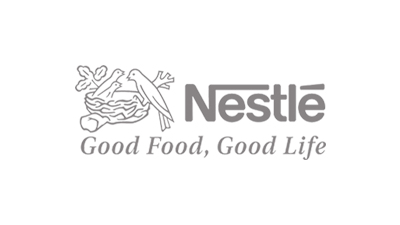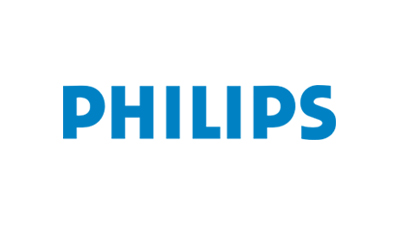Capillary rheometry has its origins in polymer melt processing, but is also directly relevant to many other material processes such as high speed coating and printing applications. Based on controlled extrusion of a test material, capillary rheometry enables material flow and deformation properties to be characterized under conditions of high force (or pressure), high shear rate and at elevated temperature. A high-shear, controlled-stress capillary rheometer consists of a heated barrel and a piston that drives molten material through a calibrated die, applying pressure either at a constant speed or a constant shear rate. Die geometry can be changed to measure rheological properties under different conditions. In addition to the most widely used single-bore configuration, there are also twin bore (dual-barrel) instruments that can perform two simultaneous tests under different conditions. There are also on-line capillary rheometers, which are mounted on an extruder. On-line rheometers process a side stream of melt diverted from the extruder. However, with on-line capillary rheometers, oxygen is excluded from the testing process, so hygroscopic materials present no problem. Thermosets also can be processed in on-line capillary instruments but not in benchtop capillary models because the resins cure quickly and cannot be cleaned out. The basics of the capillary rheometry technique are as follows: The sample under test is loaded into a bore in the temperature-controlled barrel of the capillary rheometer; A capillary die of known dimensions (diameter and length) is mounted at the bottom of the barrel bore; A piston is used to extrude the sample through the capillary die, and the resultant pressure is measured at the die entrance; Shear viscosity is calculated from knowledge of the capillary die dimensions, piston speed and pressure; The shear rate of the test can be varied to produce a flow curve (viscosity versus shear rate); Using a twin bore barrel and a ムzero lengthメ die allows simultaneous determination of shear and extensional viscosity. Capillary rheometry also enables other rheological and process characteristics to be evaluated, including die swell, melt fracture, wall slip, flow/no-flow stress, melt strength, haul off and pVT relationships. According to our (Global Info Research) latest study, the global Capillary Rheometer market size was valued at USD 35 million in 2022 and is forecast to a readjusted size of USD 43 million by 2029 with a CAGR of 3.2% during review period. The influence of COVID-19 and the Russia-Ukraine War were considered while estimating market sizes. Industry concentration is relatively high. The global market with the top three companies including Malvern, Goettfert and Dynisco. These companies production account for 12%, 9%, 8%, respectively. In consumption market, the growth rate of global consumption is smooth relatively. North America and Europe are still the mainly consumption regions due to the advanced production technology and rapid development of economy. The consumption of North America are accounting for 22% while the Europe are accounting for 20%. Capillary Rheometer can be classified as two types, such as Single-barrel and Multi-barrel. It can be widely used in many industries. Such as thermoplastic resin, thermosetting resin, copier toner, rubber material, ceramic material, food, cosmetics, medicine, coating, ink, fiber and so on. This report is a detailed and comprehensive analysis for global Capillary Rheometer market. Both quantitative and qualitative analyses are presented by manufacturers, by region & country, by Type and by Application. As the market is constantly changing, this report explores the competition, supply and demand trends, as well as key factors that contribute to its changing demands across many markets. Company profiles and product examples of selected competitors, along with market share estimates of some of the selected leaders for the year 2023, are provided. Key Features: Global Capillary Rheometer market size and forecasts, in consumption value ($ Million), sales quantity (K Units), and average selling prices (USD/Unit), 2018-2029 Global Capillary Rheometer market size and forecasts by region and country, in consumption value ($ Million), sales quantity (K Units), and average selling prices (USD/Unit), 2018-2029 Global Capillary Rheometer market size and forecasts, by Type and by Application, in consumption value ($ Million), sales quantity (K Units), and average selling prices (USD/Unit), 2018-2029 Global Capillary Rheometer market shares of main players, shipments in revenue ($ Million), sales quantity (K Units), and ASP (USD/Unit), 2018-2023 The Primary Objectives in This Report Are: To determine the size of the total market opportunity of global and key countries To assess the growth potential for Capillary Rheometer To forecast future growth in each product and end-use market To assess competitive factors affecting the marketplace This report profiles key players in the global Capillary Rheometer market based on the following parameters - company overview, production, value, price, gross margin, product portfolio, geographical presence, and key developments. Key companies covered as a part of this study include Malvern, Goettfert, Dynisco, Alpha and Instron, etc. This report also provides key insights about market drivers, restraints, opportunities, new product launches or approvals, COVID-19 and Russia-Ukraine War Influence. Market Segmentation Capillary Rheometer market is split by Type and by Application. For the period 2018-2029, the growth among segments provides accurate calculations and forecasts for consumption value by Type, and by Application in terms of volume and value. This analysis can help you expand your business by targeting qualified niche markets. Market segment by Type Single-Barrel Multi-Barrel Market segment by Application Universities Research Institute Factories Major players covered Malvern Goettfert Dynisco Alpha Instron SHIMADZU Thermo Fisher Imatek Intelligent Instrument HUAYANG EQUIPMENT Market segment by region, regional analysis covers North America (United States, Canada and Mexico) Europe (Germany, France, United Kingdom, Russia, Italy, and Rest of Europe) Asia-Pacific (China, Japan, Korea, India, Southeast Asia, and Australia) South America (Brazil, Argentina, Colombia, and Rest of South America) Middle East & Africa (Saudi Arabia, UAE, Egypt, South Africa, and Rest of Middle East & Africa) The content of the study subjects, includes a total of 15 chapters: Chapter 1, to describe Capillary Rheometer product scope, market overview, market estimation caveats and base year. Chapter 2, to profile the top manufacturers of Capillary Rheometer, with price, sales, revenue and global market share of Capillary Rheometer from 2018 to 2023. Chapter 3, the Capillary Rheometer competitive situation, sales quantity, revenue and global market share of top manufacturers are analyzed emphatically by landscape contrast. Chapter 4, the Capillary Rheometer breakdown data are shown at the regional level, to show the sales quantity, consumption value and growth by regions, from 2018 to 2029. Chapter 5 and 6, to segment the sales by Type and application, with sales market share and growth rate by type, application, from 2018 to 2029. Chapter 7, 8, 9, 10 and 11, to break the sales data at the country level, with sales quantity, consumption value and market share for key countries in the world, from 2017 to 2022.and Capillary Rheometer market forecast, by regions, type and application, with sales and revenue, from 2024 to 2029. Chapter 12, market dynamics, drivers, restraints, trends, Porters Five Forces analysis, and Influence of COVID-19 and Russia-Ukraine War. Chapter 13, the key raw materials and key suppliers, and industry chain of Capillary Rheometer. Chapter 14 and 15, to describe Capillary Rheometer sales channel, distributors, customers, research findings and conclusion.
1 Market Overview 1.1 Product Overview and Scope of Capillary Rheometer 1.2 Market Estimation Caveats and Base Year 1.3 Market Analysis by Type 1.3.1 Overview: Global Capillary Rheometer Consumption Value by Type: 2018 Versus 2022 Versus 2029 1.3.2 Single-Barrel 1.3.3 Multi-Barrel 1.4 Market Analysis by Application 1.4.1 Overview: Global Capillary Rh









